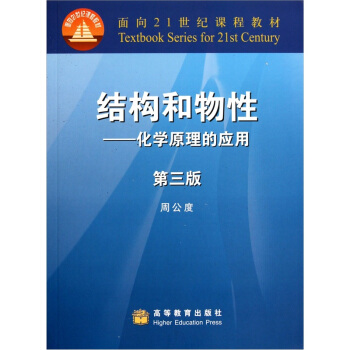

具体描述
内容简介
《应用多元统计分析方法-影印版》设有大量的例题与练习题,实用面丰富,统计思维清晰。《应用多元统计分析方法-影印版》适用于高等院校统计学专业和理工科各专业本科生和研究生作为双语教材使用。应用多元回归分析方法,样本相关,多元数据点图,特征值和特征向量,复合分析原理,因子分析,判别分析,逻辑斯谛回归方法,聚类分析,均值向量和方差-协方差矩阵,方差多元分析,预测模型和多元回归。《应用多元统计分析方法-影印版》统计内容覆盖面广于国内的概率统计教材,内容安排颇有新意,例如,在处理回归分析时,强调了从建模的观点与需要来考虑。目录
1.APPLIED MULTIVARIATE METHODS1.1 An Overview of Multivariate Methods 1
Variable-and Individual-Directed Techniques 2
Creating New Variables 2
Principal Components Analysis 3
Factor Analysis 3
Discriminant Analysis 4
Canonical Discriminant Analysis 5
Logistic Regression 5
Cluster Analysis 5
Multivariate Analysis of Variance 6
Canonical Variates Analysis 7
Canonical Correlation Analysis 7
Where to Find the Preceding Topics 7
1.2 Two Examples 8
Independence of Experimental Units 11
1.3 Types of Variables U
1.4 Data Matrices and Vectors 12
Variable Notation 13
Data Matrix 13
Data Vectors 13
Data Subscripts 14
1.5 The Multivariate Normal Distribution 15
Some Definitions 15
Summarizing Multivariate Distributions 16
Mean Vectors and Variance-Covariance Matrices 16
Correlations and Correlation Matrices 17
The Multivariate Normal Probability Density Function 19
Bivariate Normal Distributions 19
1.6 Statistical Computing 22
Cautions About Computer Usage 22
Missing Values 22
Replacing Missing Values by Zeros 23
Replacing Missing Values by Averages 23
Removing Rows of the Data Matrix 23
Sampling Strategies 24
Data Entry Errors and Data Verification 24
1.7 Multivariate Outliers 25
Locating Outliers 25
Dealing with Outliers 25
Outliers May Be Influential 26
1.8 Multivariate Summary Statistics 26
1.9 Standardized Data and/or Z Scores 27
Exercises 28
2.SAMPLE CORRELATIONS
2.1 Statistical Tests and Confidence Intervals 35
Are the Correlations Large Enough to Be Useful? 36
Confidence Intervals by the Chart Method 36
Confidence Intervals by Fishers Approximation 38
Confidence Intervals by Rubens Approximation 39
Variable Groupings Based on Correlations 40
Relationship to Factor Analysis 46
2.2 Summary 46
Exercises 47
3.MULTIVARIATE DATA PLOTS
3.1 Three-Dimensional Data Plots 55
3.2 Plots of Higher Dimensional Data 59
Chernoff Faces 61
Star Plots and Sun-Ray Plots 63
Andrews Plots 65
Side-by-Side Scatter Plots 66
3.3 Plotting to Check for Multivariate Normality 67
Summary 73
Exercises 73
4.EIGENVALUES AND EIGENVECTORS
4.1 Trace and Determinant 77
Examples 78
4.2 Eigenvalues 78
4.3 Eigenvectors 79
Positive Definite and Positive Semidefinite Matrices 80
4.4 Geometric Descriptions (p = 2) 82
Vectors 82
Bivariate Normal Distributions 83
4.5 Geometric Descriptions (p = 3) 87
Vectors 87
Trivariate Normal Distributions 87
4.6 Geometric Descriptions (p > 3) 90
Summary 91
Exercises 91
5.PRINCIPAL COMPONENTS ANALYSIS
5.1 Reasons for Using Principal Components Analysis 93
Data Screening 93
Clustering 95
Discriminant Analysis 95
Regression 95
5.2 Objectives of Principal Components Analysis 96
5.3 Principal Components Analysis on the Variance-Covariance
Matrix 96
Principal Component Scores 98
Component Loading Vectors 98
5.4 Estimation of Principal Components 99
Estimation of Principal Component Scores 99
5.5 Determining the Number of Principal Components 99
Method 1 100
Method 2 100
5.6 Caveats 107
5.7 PCA on the Correlation Matrix P 109
Principal Component Scores 110
Component Correlation Vectors 110
Sample Correlation Matrix 110
Determining the Number of Principal Components 110
5.8 Testing for Independence of the Original Variables 111
5.9 Structural Relationships 111
5.10 Statistical Computing Packages 112
SASR PRINCOMP Procedure 112
Principal Components Analysis Using Factor Analysis
Programs 118
PCA with SPSSs FACTOR Procedure 124
Summary 142
Exercises 142
6. FACTOR ANALYSIS
6.1 Objectives of Factor Analysis 147
6.2 Caveats 148
6.3 Some History of Factor Analysis 148
6.4 The Factor Analysis Model 150
Assumptions 150
Matrix Form of the Factor Analysis Model 151
Definitions of Factor Analysis Terminology 151
6.5 Factor Analysis Equations 151
Nonuniqueness of the Factors 152
6.6 Solving the Factor Analysis Equations 153
……
7.DISCRIMINANT ANALYSIS
8.LOGISTIC REGRESSION METHODS
9.CLUSTER ANALYSIS
10.MEAN VECTORS AND VARIANCE-COVARIANCE MATRICES
11.MULTIVARIATE ANALYSIS OF VARIANCE
12.PREDICTION MODELS AND MULTIVARIATE REGRESSION
APPENDIX A:MATRIX RESULTS
APPENDIX B:WORK ATTITUDES SURVEY
APPENDIX C:FAMILY CONTROL STUDY
REFERENCES
INDEX
精彩书摘
A researcher wanted to compare fathers attitudes with their daughters dating behaviors. When several different variables have been measured on the fathers and several others measured on the daughters, canonical correlation analysis might be used to identify new variables that summarize any relationships that might exist between these two sets of family members.Canonical correlation analysis is a generalization of multiple correlation in regression problems. It requires that the response variables be divided into two groups. The assignment of variables into these two groups must always be motivated by the nature of the response variables and never by an inspection of the data. For example, a legitimate assignment would be one in which the variables in one group are easy to obtain and inexpensive to measure, while the variables in the other group are hard to obtain or expensive to measure. Another would be measurements on fathers versus measurements on their daughters.
One basic question that canonical correlation analysis is expected to answer is whether the variables in one group can be used to predict the variables in the other group. When they can, then canonical correlation analysis attempts to summarize the relationships between the two sets of variables by creating new variables from each of the two groups of original variables.
用户评价
这本书最让我印象深刻的一点是它对实际操作层面的关注。很多统计教材在理论讲解上做得很好,但到了实际应用时,就变得模糊不清,不知道如何将理论转化为代码。而这本书,尤其是附带的光盘,简直是为我们这些希望将理论付诸实践的读者量身定做的。光盘中提供了大量的R语言和SAS语言的程序代码示例,这些代码不仅可以直接运行,而且注释非常详细,能够帮助我们理解每一行代码的含义以及它在实现特定统计方法时所起的作用。我尝试着运行了书中关于判别分析的案例代码,发现无论是数据导入、模型训练还是结果可视化,都非常顺畅。更重要的是,作者在讲解过程中,会强调不同统计软件在实现同一方法时可能存在的细微差别,以及如何根据实际情况选择合适的软件和命令。这种注重细节的处理方式,对于初学者来说是极大的福音。
评分这本书的出版,对于非数学专业的读者来说,可能在某些地方会稍显挑战,但整体而言,它仍然具有很高的可读性和实用性。我的一位学经济学的朋友,虽然数学功底不是特别扎实,但在我推荐了这本书后,他反馈说,虽然有些数学推导需要仔细琢磨,但他通过书中的大量案例和图示,对多元统计分析的实际应用有了非常清晰的认识。特别是书中关于因果推断、实验设计等章节,对于他理解经济学模型和分析社会现象非常有帮助。我个人也觉得,作者在力求严谨的同时,也在努力降低理解的门槛,通过生动形象的比喻和贴近生活的案例,让读者能够更好地理解抽象的统计概念。
评分这本书的封面设计就足够吸引人,那种严谨又不失现代感的排版,立刻让我对里面的内容产生了浓厚的兴趣。作为一名数学系的研究生,我一直在寻找一本能够将理论与实际应用紧密结合的教材,特别是关于多元统计分析的,这方面的内容对我日后的研究论文撰写至关重要。翻开这本书,首先映入眼帘的是清晰的目录,每章的标题都精准地概括了其核心内容,让人一目了然。从基础的回归分析到更复杂的因子分析、聚类分析、判别分析,再到时间序列分析和一些前沿的机器学习模型,这本书几乎涵盖了应用多元统计分析的各个重要方面。我特别欣赏作者在讲解理论概念时,那种深入浅出的方式。他并没有简单地罗列公式,而是循序渐进地解释每一个概念的由来、意义以及它在实际问题中是如何应用的。例如,在讲解主成分分析时,作者不仅给出了数学推导,还用生动形象的比喻来帮助我们理解降维的思想,并提供了多个实际案例,让我们能够直观地感受到主成分分析在数据压缩和特征提取方面的强大威力。
评分从这本书的学术严谨性来看,它无疑达到了国际一流水平。我在阅读过程中,发现作者在引用文献时非常严谨,并且对一些关键公式的推导都给出了详细的证明过程。这对于我这样需要深入理解统计学原理的研究生来说,是非常宝贵的。书中涉及到的一些较难的数学概念,比如矩阵理论、特征值分解等,作者都尽可能地用通俗易懂的方式进行讲解,并在必要时提供了相关的数学背景知识。而且,书中给出的定理和引理都非常清晰,并附有相应的证明,这在很多国内教材中是比较少见的。这种严谨的学术风格,不仅让我对书中的内容更加信服,也为我进一步深入研究打下了坚实的基础。
评分这本书的出版,对于我们这些希望在金融领域应用统计学知识的从业者来说,无疑是一场及时雨。我在工作中经常需要处理大量的金融时间序列数据,例如股票价格、利率变动等,并试图从中发现潜在的规律,进行风险评估和投资预测。传统的统计方法在处理这些非平稳、高噪声的数据时,往往显得力不从心。这本书中关于时间序列分析的章节,简直就是为我量身定制的。它不仅介绍了ARIMA模型、GARCH模型等经典的时间序列模型,还详细讲解了它们在金融领域的应用,比如波动率预测、异常值检测等。更令我兴奋的是,书中还引入了一些更现代的时间序列模型,例如状态空间模型和一些基于机器学习的时间序列预测方法,这些都是我之前接触较少但又非常感兴趣的内容。
评分作为一个长期从事市场营销数据分析的从业者,我一直对如何从海量用户行为数据中挖掘有价值的信息感到困惑。很多时候,我们面对的是高维度的、结构复杂的非结构化数据,传统的统计方法难以有效处理。这本书在“应用多元统计分析方法”这个总主题下,针对性地解决了我的痛点。尤其是书中关于聚类分析和关联规则挖掘的部分,我看得格外仔细。作者不仅仅是讲解了K-means、层次聚类等算法原理,更重要的是,他详细地阐述了这些方法在市场细分、用户画像构建、商品推荐等方面的具体应用。书中提供的案例分析,比如如何根据用户的购买历史进行用户分群,或者如何发现用户经常一起购买的商品组合,都具有极强的实践指导意义。
评分这本书的章节安排非常合理,从最基础的概念讲起,然后逐渐深入到更复杂、更高级的主题。我个人尤其欣赏书中关于“模型诊断与选择”这一部分。在实际应用中,我们经常会遇到模型拟合效果不佳、结果难以解释等问题,而这本书为我们提供了一套系统性的解决方案。作者详细介绍了各种模型诊断的统计量和图示方法,比如残差分析、QQ图、ROC曲线等,并对如何解释这些诊断结果进行了深入的剖析。更重要的是,书中还讲解了如何利用交叉验证、信息准则(如AIC、BIC)等方法来选择最优模型,这对于避免过拟合和欠拟合至关重要。这一点做得比我之前阅读过的很多教材都要扎实和细致,让我觉得这本书不仅仅是教我们如何“做”统计分析,更是教我们如何“做好”统计分析。
评分收到这本书后,我迫不及待地翻阅起来,尤其关注其中关于因子分析和聚类分析的部分。这两部分内容是我在处理现实数据集时经常会遇到的难题,之前的教材往往解释得过于抽象,让我难以把握其精髓。然而,这本书在这方面做得尤为出色。作者首先对因子分析的理论基础进行了详尽的阐述,从变量之间的相关性到公共因子的提取,每一步都讲解得非常到位。更让我惊喜的是,他不仅提供了多种因子提取方法(如主成分法、最大似然法等)的数学原理,还详细介绍了这些方法的优缺点以及适用场景。在讲解完理论后,作者紧接着给出了几个非常贴合实际的例子,比如市场调研中品牌形象的因子分析,或者教育学中学生能力结构的因子分析。这些案例的选取非常具有代表性,并且书中对每个案例的分析过程都进行了细致入微的描述,从数据预处理、模型构建到结果解释,都提供了清晰的指导。
评分这本书的排版和装订质量都非常好,这让我对它爱不释手。翻开书页,纸张的触感很好,印刷清晰,字体大小适中,长时间阅读也不会感到疲劳。更重要的是,书中大量的图表都绘制得非常精美,无论是散点图、箱线图,还是更复杂的图形,都清晰直观,能够有效地辅助理解。我特别喜欢书中对公式的排版,每一个公式都清晰地标注了编号,并且在正文中也能够方便地引用。这种细节上的打磨,充分体现了出版方对教材质量的重视。附带的光盘我也进行了检查,刻录清晰,文件完整,这为我后续的学习和实践提供了极大的便利。总而言之,这是一本从内容到形式都令人满意的优秀教材。
评分这本书在内容上的深度和广度都非常令人满意。作为一名在数据科学领域摸爬滚打多年的实践者,我一直在寻找一本能够融汇贯通各个统计分析方法的教材。这本书几乎做到了这一点。它不仅仅是简单地罗列各种统计模型,更重要的是,它强调了不同模型之间的联系和区别,以及在不同场景下应该如何选择和组合使用。例如,在讲解降维技术时,作者不仅介绍了主成分分析(PCA),还对比了因子分析(Factor Analysis)和独立成分分析(ICA),并分析了它们在不同应用场景下的适用性。这种“融会贯通”的讲解方式,对于提升读者的整体数据分析能力非常有帮助,也让我对如何更有效地利用数据有了更深刻的理解。
评分开卷有益处,不忘送书人
评分这本书不错
评分还没看希望可以看得懂
评分!随手一个赞
评分还没看希望可以看得懂
评分标准的研究生教材,需要基础知识,否则没用
评分统计计算的经典书目!
评分书质量很好,很合算。
评分国外的经典书籍,值得拥有
相关图书
本站所有内容均为互联网搜索引擎提供的公开搜索信息,本站不存储任何数据与内容,任何内容与数据均与本站无关,如有需要请联系相关搜索引擎包括但不限于百度,google,bing,sogou 等
© 2025 book.qciss.net All Rights Reserved. 图书大百科 版权所有












![对外经济贸易大学远程教育系列教材:公司理财(第2版) [Corporate Finance(Second Edition)] pdf epub mobi 电子书 下载](https://pic.qciss.net/11223065/rBEQWVF8lVEIAAAAAAcsjtw85eYAAFMOQCm740AByym276.jpg)
![医学物理学(第8版) 王磊等/本科临床/十二五普通高等教育本科国家级规划教材 [Medical Physics] pdf epub mobi 电子书 下载](https://pic.qciss.net/11254179/53c4e90fNd17ab593.jpg)


![高等数学疑难问题选讲 [Answers to Selected Perplexed Questions in Advanced Mathematics] pdf epub mobi 电子书 下载](https://pic.qciss.net/11507597/5652a6bbN988aa62c.jpg)


![电磁场与电磁波教学、学习与考研指导/高等学校电子信息类专业系列教材 [Guidance for Field and Wave Electromagnetics:Teaxhing,Leaning and Graduate Student Entrance Examination] pdf epub mobi 电子书 下载](https://pic.qciss.net/11609562/54a9dc83Ncae06027.jpg)
